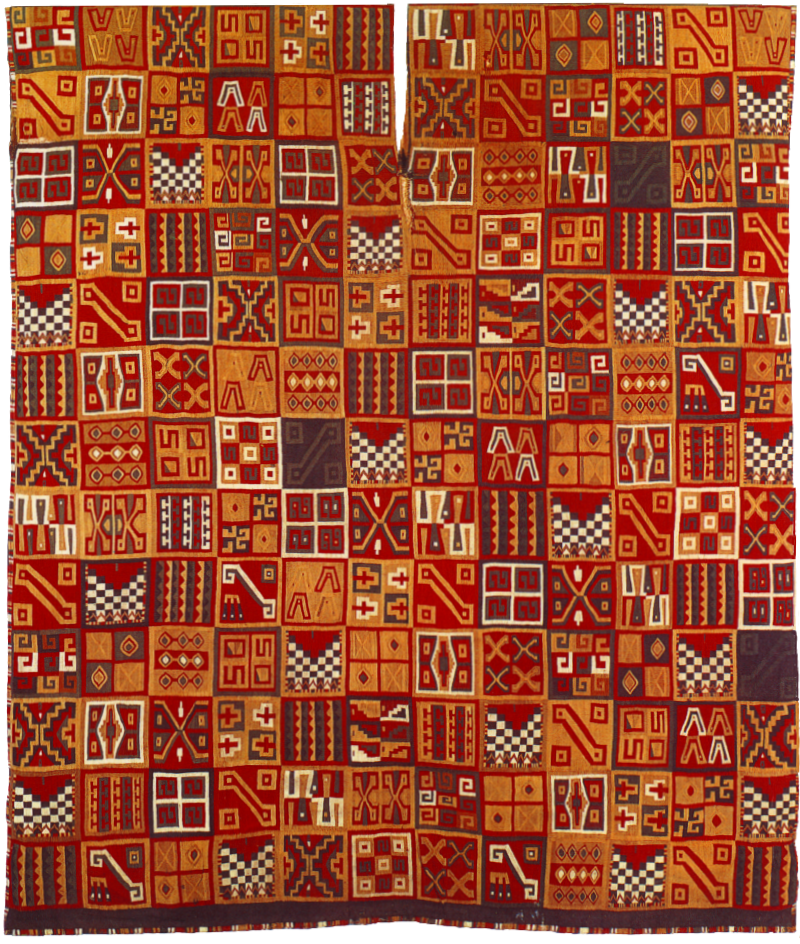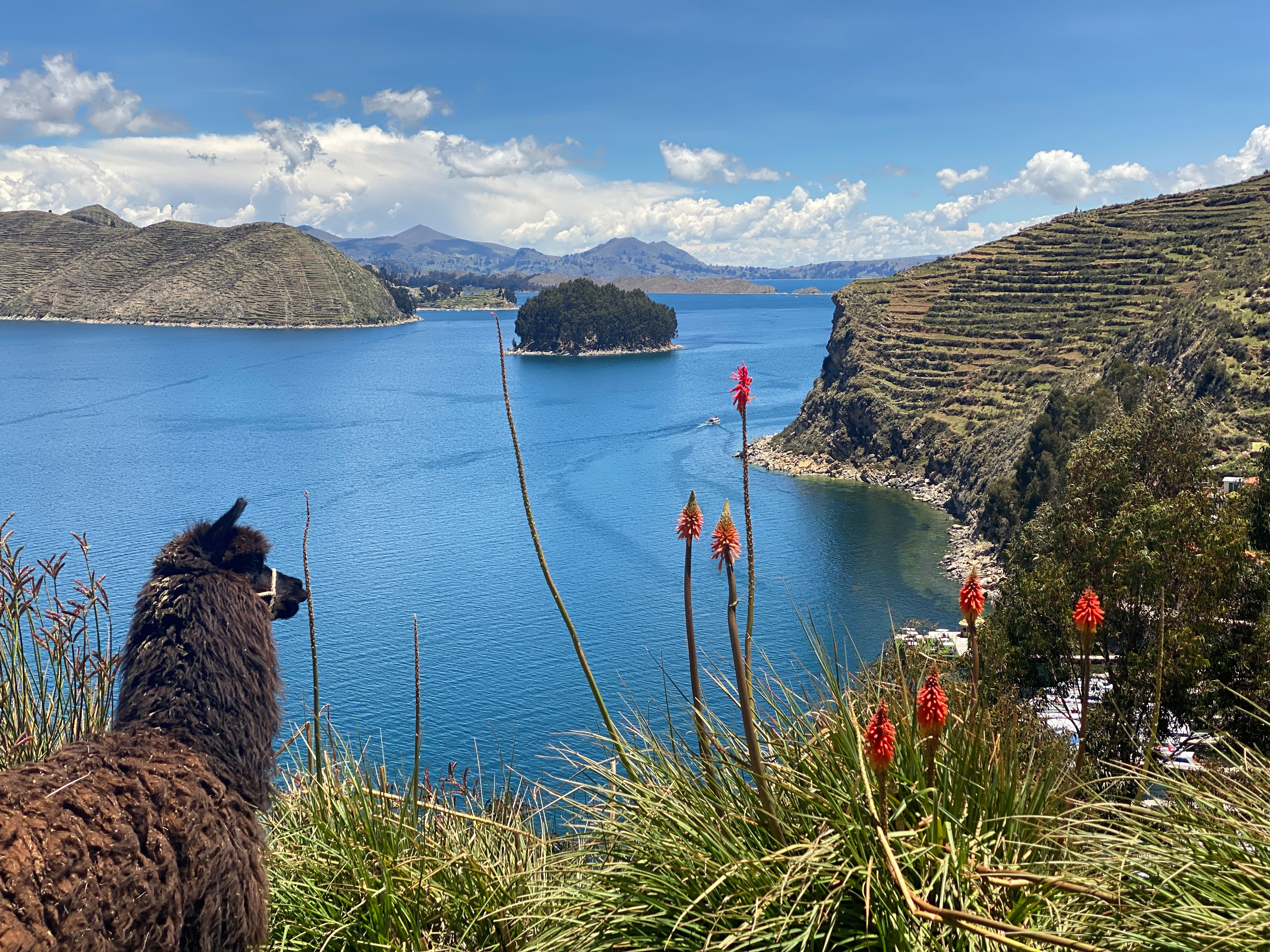|
Andean Religion
The Inca religion was a group of beliefs and rites that were related to a mythological system evolving from pre-Inca times to Inca Empire. Faith in the ''Tawantinsuyu'' was manifested in every aspect of his life, work, festivities, ceremonies, etc. They were polytheists and there were local, regional and pan-regional divinities. It has been noted that aspects of the Andean religion extend well beyond the border of the former Inca Empire into the lands of the Mapuches and Huilliches in southern Chile, which has raised the hypothesis whether there is a prior dissemination of Andean religion from Tiwanaku. Duality A theme in Inca mythology is the duality of the Cosmos. The realms were separated into the upper and lower realms, the ''hanan pacha'' and the ''ukhu pacha'' and ''urin pacha''. ''Hanan pacha'', the upper world, consisted of the deities of the sun, moon, stars, rainbow, and lightning while ''ukhu pacha'' and ''urin pacha'' were the realms of Pachamama, the earth mother ... [...More Info...] [...Related Items...] OR: [Wikipedia] [Google] [Baidu] |
Pachamama
Pachamama is a goddess revered by the Indigenous peoples of the Andes. In Inca mythology she is an " Earth Mother" type goddess, Dransart, Penny. (1992) "Pachamama: The Inka Earth Mother of the Long Sweeping Garment." ''Dress and Gender: Making and Meaning.'' Ed. Ruth Barnes and Joanne B. Eicher. New York/Oxford: Berg. 145-63. Print. and a fertility goddess who presides over planting and harvesting, embodies the mountains, and causes earthquakes. She is also an ever-present and independent deity who has her own creative power to sustain life on Earth. Her shrines are hallowed rocks, or the boles of legendary trees, and her artists envision her as an adult female bearing harvests of potatoes or coca leaves. The four cosmological Quechua principles – Water, Earth, Sun, and Moon – claim Pachamama as their prime origin. Priests sacrifice offerings of llamas, ''cuy'' ( guinea pigs), and elaborate, miniature, burned garments to her. Pachamama is the mother of Inti the sun go ... [...More Info...] [...Related Items...] OR: [Wikipedia] [Google] [Baidu] |
Qoya
The Tawantinsuyu (Quechua: "land of the four quarters") or Inca Empire was a centralized bureaucracy. It drew upon the administrative forms and practices of previous Andean civilizations such as the Wari Empire and Tiwanaku, and had in common certain practices with its contemporary rivals, notably the Chimor. These institutions and practices were understood, articulated, and elaborated through Andean cosmology and thought. Following the Spanish conquest of the Inca Empire, certain aspects of these institutions and practices were continued. Philosophy and ideology Inca ideology was founded on Andean cosmology. This cosmology was hierarchical and dualistic, with a variety of opposing forces jostling in position through on-going action. Their worldview was animistic, and their ''amauta'' or ''amawt’a'' (teachers or sages) taught that the world was suffused with ''kamaq'', meaning "breath" or "life-force". Change was understood as occurring through asymmetries in power between those f ... [...More Info...] [...Related Items...] OR: [Wikipedia] [Google] [Baidu] |
Mama Killa
Mama Quilla ( Quechua "Mother Moon", Hispanicized spelling ''Mama Quilla''), in Inca mythology and religion, was the third power and goddess of the moon. She was the older sister and wife of Inti, daughter of Viracocha and mother of Manco Cápac and Mama Uqllu ''(Mama Ocllo)'', mythical founders of the Inca empire and culture. She was the goddess of marriage and the menstrual cycle, and considered a defender of women. She was also important for the Inca calendar. Myths surrounding Mama Quilla include that she cried tears of silver and that lunar eclipses were caused when she was being attacked by an animal. She was envisaged in the form of a beautiful woman and her temples were served by dedicated priestesses. It is possible that word quilla is a borrowing from Puquina language explaining thus why genetically unrelated languages such as Quechua, Aymara and Mapuche have similar words for the Moon. Similitudes are not only linguistic but also symbolical as in Mapuche and Ce ... [...More Info...] [...Related Items...] OR: [Wikipedia] [Google] [Baidu] |
Kon (Pre-Incan Mythology)
In Pre-Incan mythology, Kón (Con) was the god of rain and wind that came from the North. He is thought to be a deity to the Paracas culture, Paracas Civilization, who was later adopted into Nazca culture, Nazca and Inca mythology, Incan mythology through different names. He was a son of Inti (the sun god) and Mama Killa ("mother moon"). Legend of Kón According to the legend of Kón, he arrived from the North in the beginning of time. Kón was described as a being in the shape of a human, but had no joints or bones. In some legends, he is said to have flown in with the mask of a bird over his face. He came bearing fruit, feline masks, and a staff. He had large eyes, leading to many calling him the ''"Dios Oculado",'' meaning "eyed god". He is the son of Inti, sometimes referred to as “the son of the sun”. Because of this, as he wandered the earth, he raised mountains and created valleys at his will. He is said to be the creator of humans, to whom he gave plentiful fruit and ... [...More Info...] [...Related Items...] OR: [Wikipedia] [Google] [Baidu] |
Henotheism
Henotheism is the worship of a single, supreme god that does not deny the existence or possible existence of other deities that may be worshipped. Friedrich Schelling (1775–1854) coined the word, and Friedrich Welcker (1784–1868) used it to depict primitive monotheism among ancient Greeks. Max Müller (1823–1900), a British philologist and orientalist, brought the term into wider usage in his scholarship on the Indian religions, particularly Hinduism, whose scriptures mention and praise numerous deities as if they are one ultimate unitary divine essence. Müller made the term central to his criticism of Western theological and religious exceptionalism (relative to Eastern religions), focusing on a cultural dogma which held "monotheism" to be both fundamentally well-defined and inherently superior to differing concepts of God. Definition and terminology Friedrich Schelling coined the German term and German 'theism' (which comes ). The term refers to a fo ... [...More Info...] [...Related Items...] OR: [Wikipedia] [Google] [Baidu] |
Inca Society
The Inca society was the society of the Inca civilization in Peru. The Inca Empire, which lasted from 1438 to 1533 A.D., represented the height of this civilization. The Inca state was known as the Kingdom of Cusco before 1438. Over the course of the empire, the rulers used conquest and peaceful assimilation to incorporate a large portion of western South America, centered on the Andes mountain ranges. The empire proved relatively short-lived however: by 1533, Atahualpa, the last Sapa Inca (emperor) of the Inca Empire, was killed on the orders of the conquistador Francisco Pizarro, marking the beginning of Spanish rule. The last Inca stronghold, the Neo-Inca State in Vilcabamba, Peru, Vilcabamba, was conquered by the Spanish in 1572. Population Population estimates for the Tawantinsuyu society range from as few as 4.1 million people to more than 36 million. Most estimates are between 6 and 14 million people. The reason for these various estimates is that, while the Inca kept ex ... [...More Info...] [...Related Items...] OR: [Wikipedia] [Google] [Baidu] |
Coricancha
Coricancha, Curicancha, Koricancha, Qoricancha or Qorikancha (''"The Golden Temple,"'' from Quechua ''quri'' gold; ''kancha'' enclosure) was the most important temple in the Inca Empire, and was described by early Spanish colonialists. It is located in Cusco, Peru, which was the capital of the empire. History Originally named ''Intikancha'' or ''Intiwasi'',''Qurikancha'' A Homage to the Mystical, Magical, most Famous and Oldest City of the American Continent it was dedicated to Inti (the Sun god of the Inca), and is located at the former Inca capital of . The High Priest r ... [...More Info...] [...Related Items...] OR: [Wikipedia] [Google] [Baidu] |
Inti
Inti is the ancient Inca mythology, Inca solar deity, sun god. He is revered as the national Tutelary deity, patron of the Inca state. Although most consider Inti the sun god, he is more appropriately viewed as a cluster of solar aspects, since the Inca divided his identity according to the stages of the sun.Conrad and Demarest 1984, pg.108 Worshiped as a patron deity of the Inca Empire, Pachacuti is often linked to the origin and expansion of the Inca Sun Cult.Steele & Allen 2004, pg. 246D'Altroy 2003, pg. 147 The most common belief was that Inti was born of Viracocha, who had many titles, chief among them being the God of Creation ex nihilo, Creation. The word ''inti'' is not of Quechua language, Quechua origin but a loanword from Puquina language, Puquina.Cerrón-Palomino, Rodolfo. (2013). Las lenguas de los incas: el puquina, el aimara y el quechua. Frankfurt, Alemania: Peter Lang Academic Research. Borrowing from Puquina explains why historically unrelated languages such as Q ... [...More Info...] [...Related Items...] OR: [Wikipedia] [Google] [Baidu] |
Lake Titicaca
Lake Titicaca (; ; ) is a large freshwater lake in the Andes mountains on the border of Bolivia and Peru. It is often called the highest navigable lake in the world. Titicaca is the largest lake in South America, both in terms of the volume of water and surface area.Grove, M. J., P. A. Baker, S. L. Cross, C. A. Rigsby and G. O. Seltzer 2003 Application of Strontium Isotopes to Understanding the Hydrology and Paleohydrology of the Altiplano, Bolivia-Peru. ''Palaeogeography, Palaeoclimatology, Palaeoecology'' 194:281-297. It has a surface elevation of . Overview The lake is located at the northern end of the endorheic Altiplano basin high in the Andes on the border of Peru and Bolivia. The western part of the lake lies within the Puno Region of Peru, and the eastern side is located in the Bolivian La Paz Department (Bolivia), La Paz Department. The lake consists of two nearly separate subbasins connected by the Strait of Tiquina, which is across at the narrowest point. The lar ... [...More Info...] [...Related Items...] OR: [Wikipedia] [Google] [Baidu] |
Viracocha
Viracocha (also Wiraqocha, Huiracocha; Quechua Wiraqucha) is the creator and supreme deity in the pre-Inca and Inca mythology in the Andes region of South America. According to the myth Viracocha had human appearance and was generally considered as bearded. According to the myth he ordered the construction of Tiwanaku. It is also said that he was accompanied by men also referred to as Viracochas. It is often referred to with several epithets. Such compound names include Ticsi Viracocha (''T'iqsi Wiraqocha''), Contiti Viracocha, and, occasionally, ''Kon-Tiki Viracocha'' (the source of the name of Thor Heyerdahl's raft). Other designations are "the creator", Viracochan Pachayachicachan, Viracocha Pachayachachi or Pachayachachic ("teacher of the world"). For the Inca the Viracocha cult was more important than the sun cult. Viracocha was the most important deity in the Inca pantheon and seen as the creator of all things, or the substance from which all things are created, and i ... [...More Info...] [...Related Items...] OR: [Wikipedia] [Google] [Baidu] |






